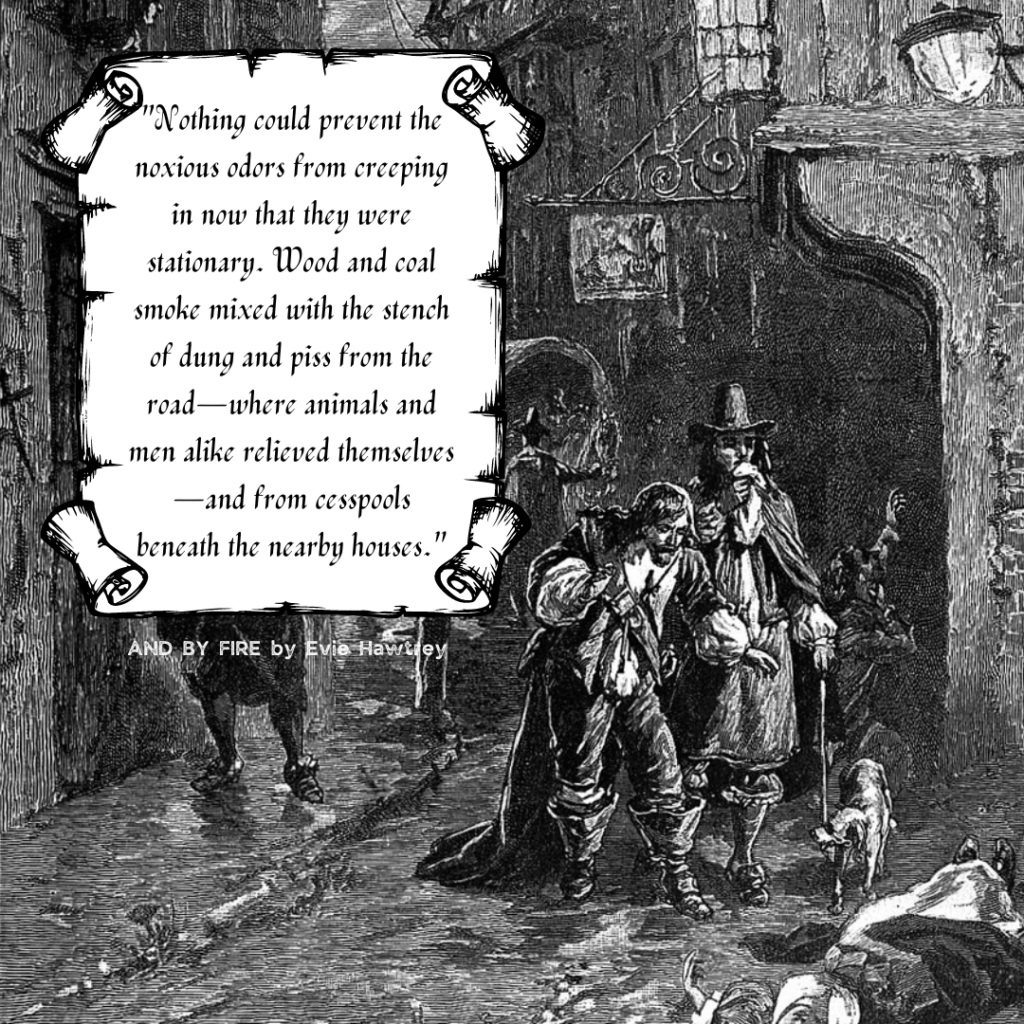London Circa 1666—oh the smell!
And By Fire is a dual timeline crime novel. While Nigella and O’Leary race around modern London trying to stop a brutal killer, a second pair of unlikely detectives (a lady-in-waiting to the Queen and a royal fireworks maker) search for a missing friend—a bookseller who disappeared into the smoke of London’s Great Fire some 350+ years ago.
What was London circa 1666 . . . before 80% of the City burned?
Before it was leveled by flame, London was the third largest city in the Western World (lagging behind Constantinople and Paris) and home to over 300,000 people (though the City proper—the portion inside the city walls—accounted for only 80,000 of those residents). But London was not glamorous . . .in fact it as not even nice.
- It was noisy, dirty and smelly, thanks in large part to streets filled with waste (industrial waste from manufacturing, trash from everyday life and human and animal waste—as in urine and poop).
- There was no zoning. None. So go ahead and build your dream Restoration mansion but be prepared to live right next door to a charnel house (a building storing bones of the dead—how’s that for a view from the back garden).
- It was a veritable rabbit warren of streets and lanes with no sense of symmetry or order. A situation which meant . . .
- The traffic was terrible. Traveling even short distances could be a time-consuming slog.
- And the air–quality was worse. Smoke from Brewers houses and other sources hung low over the city, leaving the common man choking and even the aristocrats in their gardens coughing.

As And By Fire opens, the Royal Court of Charles II has only recently returned to Whitehall on London’s outskirts. They’ve been out of the city for five months not because of the smoke or the smell—they’d be used to that—but because of the plague. A massive outbreak of plague swept London in 1665 ultimately killing 1 in 5 Londoners. This was the eerie, unnaturally empty and still-smelling-of-the-dead London to which the Court returned after sojourning in Hampton Court and then in Oxford.
Oh the glamour of living in England’s Restoration era capital.
Personally, I’d rather be living in modern Southwark (as Nigella Parker does)—even if that means pursuing a killer who makes sculptures using burned flesh.